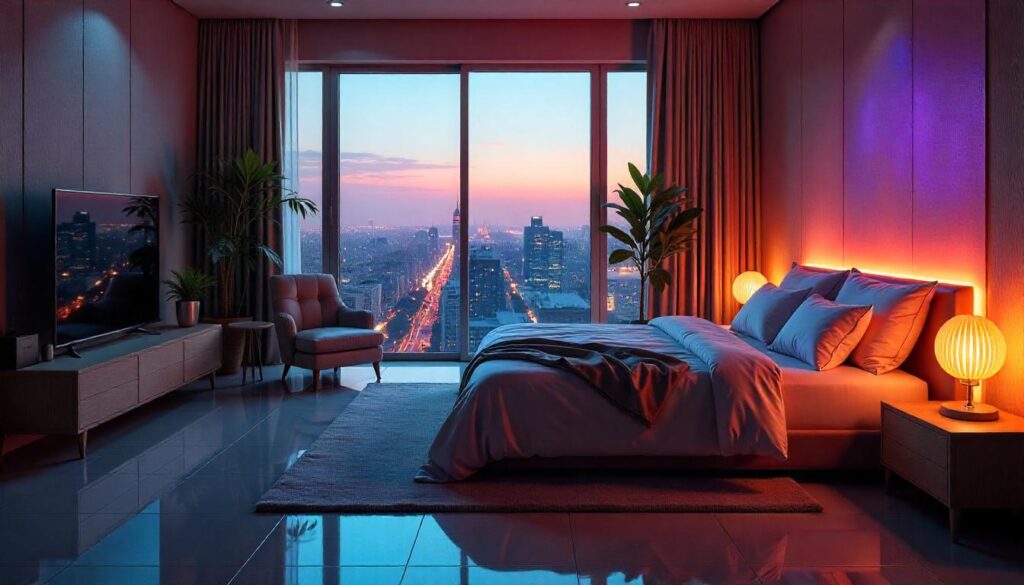
India’s home improvement sector is booming towards a forecasted USD 15 billion by 2030 at a 12% CAGR, and homeowners are increasingly turning to flooring solutions that balance residential looks with commercial-grade performance, fueling a renaissance in epoxy and concrete coatings.
Fueled by urbanization, increasing disposable incomes, and a desire for green, low-maintenance interiors, these coatings are changing homes in metros and Tier 2 cities. Though maintaining consistency with India’s Smart Cities Mission, high installation prices and skill gaps provide challenges, especially to smaller contractors.
Demand for long-lasting, fashionable flooring is driven by India’s thriving real estate market, where 4.5 million housing units were completed in 2024, as per a FICCI report. City homeowners, looking for floors that can handle high foot traffic, spills, and wear and tear while synchronizing with contemporary interiors, are moving towards epoxy and concrete finishes.
What were once industrial-specific solutions have now entered homes with personalized finishes, bold hues, and metallic sheens or terrazzo-like textures. According to a Nielsen survey in 2024, 70% of city Indian homeowners value flooring that is both long-lasting and design-friendly, demonstrating a functional luxury shift.
Epoxy finishes, prized for their smooth, high-shine appearance, are becoming popular. These resin-based finishes, used over concrete surfaces, withstand stains, chemicals, and abrasions for as long as 20 years with little upkeep, according to a 2023 study by IIT Madras. Asian Paints has launched low-VOC, environment-friendly epoxy finishes with emissions lowered by 30% and attracting health-conscious consumers.
In Bengaluru’s gated communities, epoxy flooring with 3D graphics or marble finish has increased property values by 5%, according to a CII report dated 2024.
Their waterproof nature makes them suitable for kitchens and bathrooms, which are high-usage areas in India’s wet climate.
Polished concrete coating, providing a rough, industrial-chic look, is just as popular. Boosted by nanocellulose additives, coatings receive 25% more compressive strength, according to a 2024 IIT Delhi study, making them ideal for heavy-traffic residential spaces.
Companies such as Green Floor Innovations offer customized concrete overlays with quartz or recycled glass embedded within them, replicating natural stone at a fraction of the expense. Applied to Gurugram’s high-end villas, these floors reduce cooling expenses by 15% through their thermal mass, in sync with India’s energy efficiency target under the Bureau of Energy Efficiency (BEE).
Sustainability is a major driver. Epoxy and concrete coatings use recycled material, such as fly ash or rPET aggregates, lowering virgin resource consumption by 20%, according to a 2024 FICCI report.
They complement India’s Plastic Waste Management Rules, 2016, that require sustainable construction and back the National Green Mission’s goal of 2030 with 45% emissions cut. Owners enjoy reduced lifecycle expenses, with epoxy floors priced at ₹150–₹300 per square foot compared to ₹500 for conventional marble, according to industry estimates.
Firms are spending big on R&D. Pidilite Industries invested ₹200 crore in 2024 for bio-based epoxy resins, while Berger Paints created self-leveling concrete coatings that save 30% of installation time. BASF recently displayed hybrid coatings of epoxy and polyurethane at an expo, with 99% bacterial resistance for hygienic homes.

These products address India’s USD 2 billion market for flooring, with exports to the EU that contribute 10% to sales, adhering to REACH standards.
Government programs are driving adoption. The Smart Cities Mission, covering 100 cities, is driving long-lasting urban infrastructure, such as residential flooring. The Raising and Accelerating MSME Performance (RAMP) program supports smaller contractors, who fit 50% of residential floors, to adopt higher-end coatings.
PM Gati Shakti increases supply chain efficiency for raw materials such as resin and cement. The Skill India Digital Hub has certified 2 million construction workers since 2023, but only 5% are epoxy and concrete trained, according to Nasscom.
Challenges remain. Epoxy and concrete coatings are 20–30% more expensive to apply than ceramic tiles, restricting use to 15% of urban households, according to a 2024 SIDBI report. Shortages of skilled labor in Tier 2 cities drive up costs by ₹50 per square meter.
Infrastructural problems, such as unreliable power, interfere with mixing and curing operations, amounting to Rs. 1–2 lakh per month, according to industry talks. Lack of awareness among rural customers, who prefer conventional flooring, and delays in eco-coating certification approval by the government (4–6 years compared to China’s 2 years) retard innovation. Increased competition from ASEAN nations with less labor cost impedes pressure.
Experts recommend solutions. Subsidies under the Technology Upgradation Scheme can absorb installation expenditures. Increasing Skill India’s training in coating applications can combat manpower shortages. Enhancing 5G connectivity and power stability, as scheduled under PM Gati Shakti, will expedite operations.
Public-private collaborations with IITs can increase R&D on a large scale. CII-led campaigns can inform and educate, driving demand.
The epoxy and concrete coatings renaissance is transforming Indian residences, combining commercial strength with home beauty.
With its USD 3 billion market for flooring expected in 2030, these products are central to achieving aesthetic and sustainability objectives. By overcoming cost, talent, and infrastructure challenges, the Indian flooring industry can drive the world toward high-performance, sustainable interiors, and pave the way for intelligent, sustainable homes.
